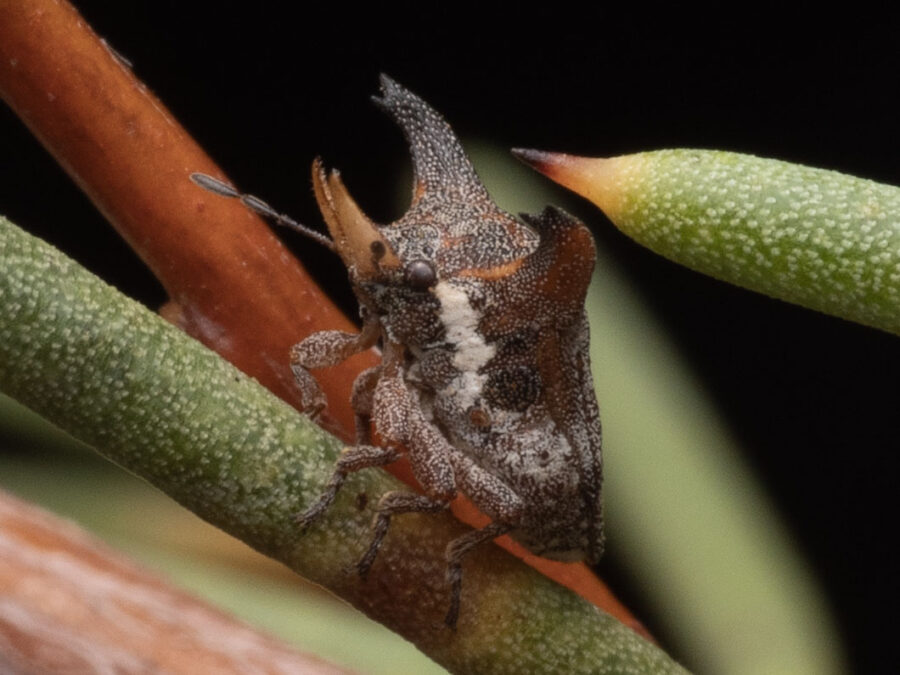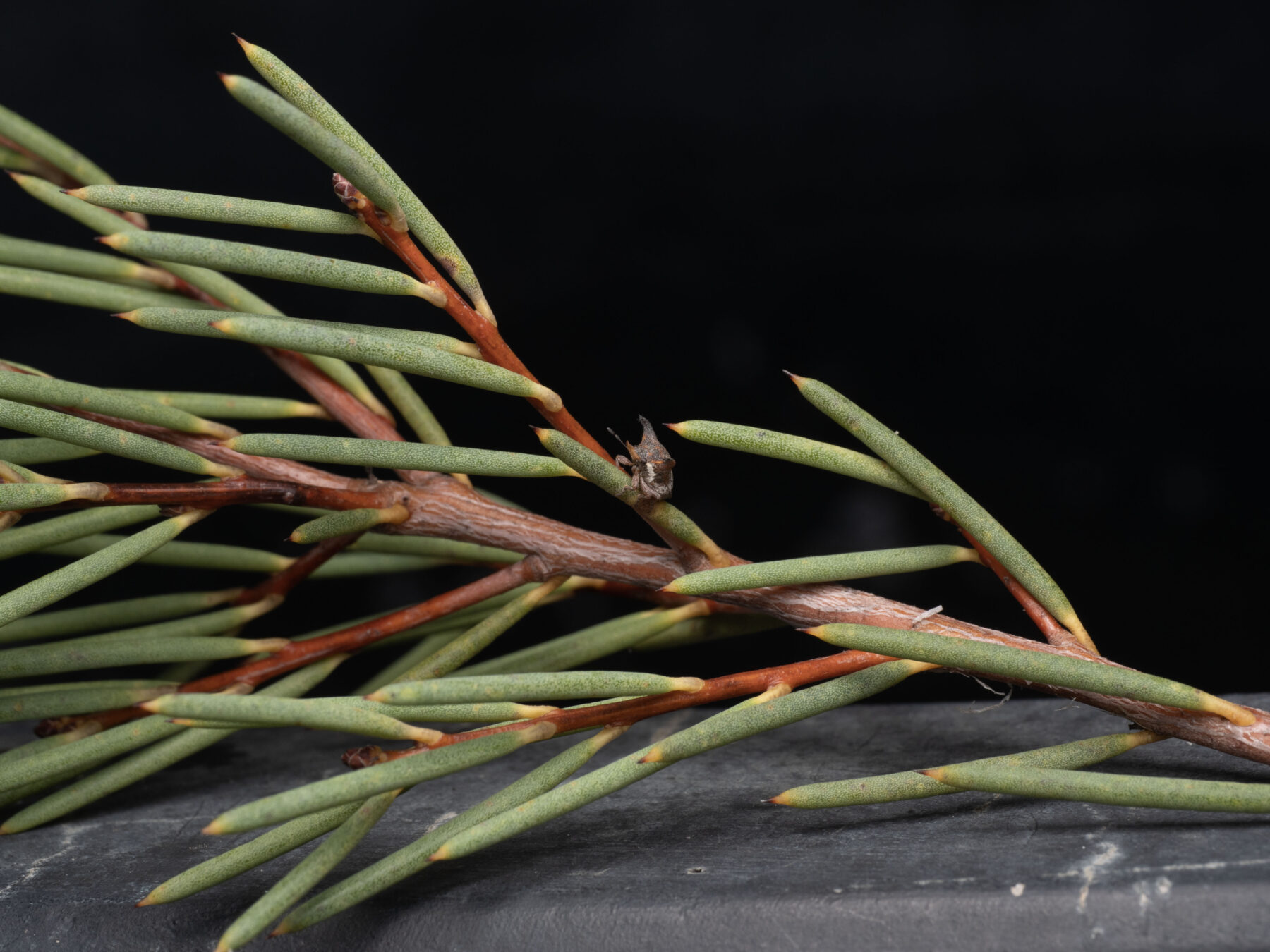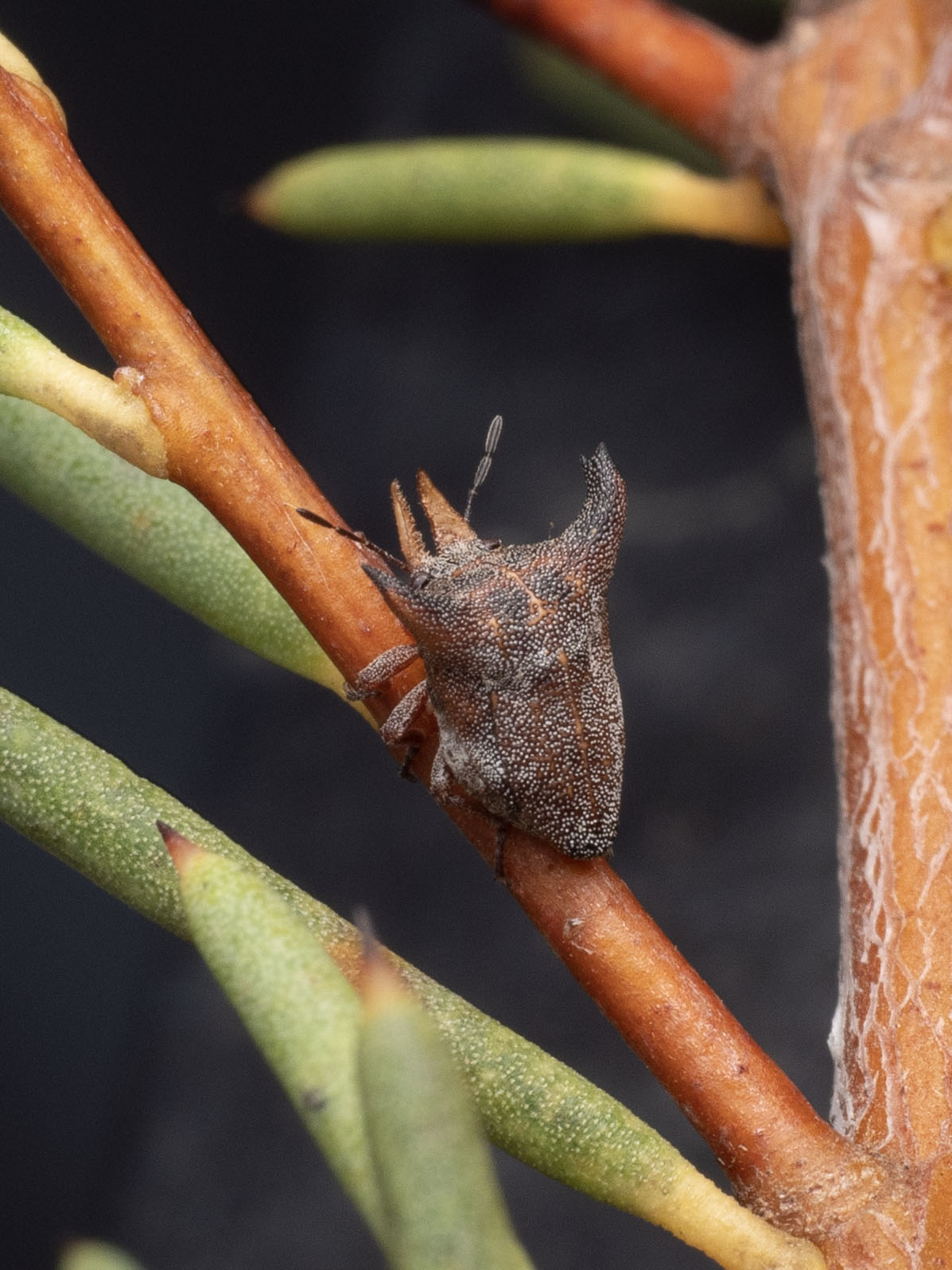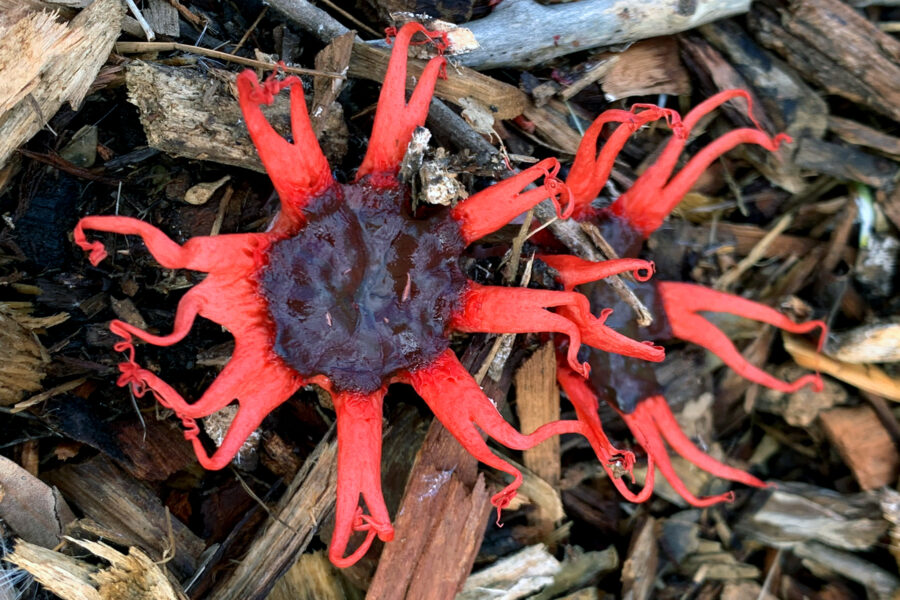There’s a new stink bug in town, and he’s hella horny

A stink bug species, believed to be new to science, has been discovered during a two-week expedition near Kepa Kurl/Esperance in Western Australia.
The size of a pea, it’s remarkably well camouflaged on its host plant, a local Hakea species. and If you look closer, you’ll see it has huge curved horns and bright yellow tusks.

Entomologists from the University of New South Wales and Western Australian Museum discovered the bug during a two-week Bush Blitz expedition with the help of the Tjaltjraak Rangers and Senior Cultural Advisor, Doc Reynolds, at a place of cultural significance to the Wudjari people of the region.
“This stink bug has never been classified before and is new to science,” says University of NSW Dr Gerry Cassis, one of the two-person team that discovered the stink bug. “Under a microscope you can clearly see a pair of huge projections on the side of the thorax that makes them blend in with their shrub host plants.
“The discovery of this remarkable stink bug highlights how little we know of insects in Australia, with only 30 per cent of species known. Its restriction to the Esperance region also demonstrates the hyperdiversity of insects in Western Australia.”
This is Bush Blitz program’s 48th expedition and involved Parks Australia staff and 15 scientists including botanists from WA Herbarium, zoologists from the Western Australian (WA) Museum, Northern Territory Museum and Art Gallery, Griffith University, University of New South Wales and the Australian Museum.
Tjaltjraak Rangers and Senior Cultural Advisors worked alongside the scientific team, sharing their invaluable knowledge of the area and helping to discover the new species.
According to WA Museum’s Dr Nik Tatarnic, who makes up the second member of the bug’s discovery team: “Only the males have the tusks and we don’t know what they’re for yet. They could be for courtship, or they could be used to lever other males off the plant as they compete for females. Maybe the male with the biggest tusks gets the girl, we’ve never seen anything like it before in a stink bug.
“Although we have found eight new bug species on this trip, this stink bug is the most interesting of all.”

Five science teachers also joined the expedition; each selected as part of the Bush Blitz TeachLive program. TeachLive has helped to engage more than 20,000 young people by bringing the expedition directly into the classroom in real time via a dedicated web link.
Since Bush Blitz’s inception in 2010 it has discovered more than 1850 plant and animal species new to science including frogs, reptiles, snails, fish, spiders, marine invertebrates and insects.
The Bush Blitz program has worked with more than 50 land management organisations, along with 300 Indigenous rangers and Traditional Owners to improve understanding of Australia’s biodiversity while sharing knowledge between research institutions and First Nations communities.
“This Bush Blitz has been a fantastic opportunity for Western science to work alongside cultural science for a common goal,” says Doc Reynolds, senior cultural advisor, Esperance Tjaltjraak Native Title Aboriginal Corporation.
“It’s been wonderful to share each other’s knowledge for the preservation and protection of the biodiversity of the region.”

“There is still so much to learn about Australia’s unique biodiversity and every discovery of a species new to science through the Australian Bush Blitz program brings us closer to understanding our native wildlife,” says Jody Swirepik, Director of National Parks.
“We’re proud of the Bush Blitz program which involves a range of specialist taxonomists, Indigenous communities, rangers and landowners, teachers, and students all working together to make an extraordinary contribution to the protection of our country’s natural heritage.
“With around three-quarters of Australia’s biodiversity still unknown to Western science, the Bush Blitz program is a fantastic initiative giving us a deeper understanding of Australian habitats to inform nature positive decisions for the future.”
Bush Blitz is a partnership between the Australian Government through Parks Australia, BHP and Earthwatch Australia.



